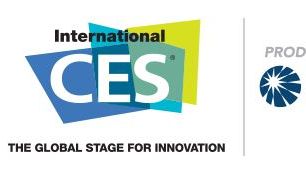
Blog post -
What happens in Vegas…CES from an Internet of Things perspective
Telenor Connexion’s CMO Robert Brunbäck reports from the International CES
(Consumer Electronics Show) in Las Vegas.
With over 150.000 attendees and
3200 exhibitors in Vegas the Consumer Electronics show gives an early heads up
for where the consumer electronics market is heading. As electronics is
becoming an integral part of nearly any product nowadays much attention was
beyond the obvious ones of curved smartphones and huge ultra-thin, ultra HD TV-screens.
The exhibition was flooded with internet enabled things ranging from the
connected toothbrush learning your kids how to brush their teeth, the basketball
with 8 built-in sensors and the smart bed pushing movement, heart rate and
breathing data to the cloud. While overwhelming to cover the whole exhibition I
have tried to list a few key examples and trends from CES 2014, with special
focus in the area of Internet of Things.
#1 Connected sports – become your own coach
Although sport giants such as Nike and Adidas has been in the game for quite a while launching technology gadgets such as Nike+, Fuelband and Smartwatch sports are increasingly becoming a hotbed for innovation in how Internet connectivity can enable smarter, more valuable and fun sporting goods and services. For example Zepp labs sport motion sensors are tailored to analyze and help improve your golf swing, baseball or tennis moves. For example, the baseball app lets players and coaches review swings in 3D and measure important aspects of each swing like bat speed and angle at impact, track progress and trends over time, compare swings to pros and friends, and get personalized tips, drills and coaching.
94fifty is a basketball with 8 integrated sensors analyzing dribbling and shooting via a smartphone app. 94fifty apps are for free but premium options will later on include personal coaching for a small fee. Tennis giant Babolat has launched their first tennis racket including sensors to track how well you hit the ball and analyze your tennis game in detail. You get a score based on endurance, power and technique that you can improve over time and compare with friends. Instabeat - a new startup showed a prototype of swimming googles measuring heart beat directly in the googles for the swimmer to optimize pace and master performance during training. Gadgets all connected to the cloud – all dramatically changing how the user interact with these brands and pave the way for new business models.
#2 Wearable technology in all form factors
Wearable sensor technology comes in many forms - integrated in clothes or soles like Footlogger, or as small clip-on devices such as Kiwi enabling you to build rules similar to the “if this then that” model. For example using gestures to talk to home appliances or updating your online nutrition log by talking the Kiwi device on your collar. Even smart jewelry was demonstrated - making it possible to update integrated jewelry images via bluetooth. Reebok showcased Checklight - a small impact detector for contact sports to detect possible dangerous impacts in need of closer attention. Although Google were not exhibiting, Google glasses were quite frequently seen throughout the exhibition and were referenced as the ultimate wearable gadget. Garmin launched Vivofit, their version of a Fuelband helping you to keep track of your daily exercise and many more similar examples were showcased.
#3 “Mommytech” making life a little simpler
One area of CES was called “Mommytech” showcasing anything from smart phone connected baby monitors to a sensor equipped toothbrush making it possible to support kids in how to brush their teeth in a proper way. Sensemother showed a smart hub with 12 different apps to make life simpler at home. It includes small motion “cookies” which, attached to different things and combined with rules, can bring real-time information like if medicine box taken, when kids get back from school or a possible intrusion in the home. Although Mommytech is a badly chosen descriptor it is showing the movement to find usable and life improving services for daily usage. These “appcessories” are often closely tied to the smartphone, increasingly becoming an even more central part of daily practicalities.
#4 Connected, smart toys and kids gadgets
As sensor and connected technology is getting cheaper and smaller it of course finds its way into toys and kids gadgets as well. Beyond some 50 kids tablet versions there were innovative new products such as Ibitz - an activity tracker for kids bundled with an online game with the simple idea of rewards for physical activity that you can use in the online game later on. Sphero looks like a simple plastic ball but is a combination of a robot, gyro and accelerometer; bluetooth enabled and steered by your smartphone with access to over 30 different apps and games. It also includes an open development platform to spur 3rd party app development, and inspire young kids into simple programming.
#5 Robotics – moving into the consumer space
Not surprisingly robots in all forms draw a lot of attention at CES. More and more advanced robot vacuum cleaners is now followed by robot window cleaners such as Ecovacs winbot and home aid robots aimed for the consumer market. Another example is the Paro therapeutic robot looking like a baby harp seal with fur meant to become a companion or substitute to an ordinary pet, aimed to release stress and support persons for example suffering from depression. Even simple consumer robots are built to constantly learn and improve their skills over time.
#6 Life improving Health & Wellness products
CES was flooded with health and wellness products all getting increasingly connected, either through inbuilt connectivity or via your smart phone, and sending data to the cloud to help you to keep track of body functions and activity levels. Wihtings showcased multiple smart products ranging from scales to the Aura the sleep monitoring system. Vancive demonstrated the Metria solution – almost like a band aid measuring calorie burned, activity and sleep pattern.
Talking about sleep - the bed is also getting smarter. Bed manufacturers Sleepnumbers launched the SleepIQ app whereby you get detailed information about your sleep pattern all collected in the cloud for historical trends and advanced analysis etc. Integrated sensors collect data such as breathing rate, movement, heart rate and coupled with your information about your eating, drinking, training etc. the aim is for you to learn how to secure the right prerequisites for a good night’s sleep.
#7 Connected cars – moving towards standardization
As always a lot of attention focused around the car manufacturers launching more and more advanced connected services now moving far beyond the vehicle centric services such as remote diagnostic and e-Call. Infotainment, real-time navigation, streaming music and internet hotspot are deployed, not only in premium segments but are becoming a more integral part of the future standard car. Kia, Ford, Audi and Volvo showcased new applications, Chevrolet are integrating 4G services and Internet hotspots across multiple models and Mercedes-Benz showcased how they have integrated their in-car services linked to other connected “things” such as the Pebble watch and the Nest thermostat. And of course, “born connected” electric and hybrid vehicles were also in the spotlight where the fantastic Toyota I-road draw huge attention. It is evident that Internet enabled services in the car can make driving both more safe, green and convenient and that it is becoming one of the key selling points for most car manufacturers.
#8 The smart home – finally?
The smart home seems to have gained some momentum and we are starting to see more products and services with focus on the user value and usability rather than technology itself. Numerous products in the home environment such as smart plugs, connected lightning such as Philips Hue, thermostats and smart fire alarms (Nest), connected doorbell/camera (Doorbot) coupled with remotely controlled door locks like Kwikset, smart kitchen appliances from Samsung and Whirlpool, smart phone controlled watering of indoor plants is of course side by side the all-connected TVs, gaming consoles and Hi-Fi systems such as Sonos. Notably, more focus is now also about tying it all together rather than to serve as totally separate streams and apps. Revolv demonstrated a smart hub supporting 10 different wireless languages to facilitate interaction between various home product manufacturers using different protocols and technologies. Simplification like this will in turn enable new services and improved usability for the end user – critical for the smart home to reach beyond the obvious early adopters’ to the mass market.
Everything connected
In summary - the CES event is clearly showing a vast momentum in that sensor and connected technology are becoming a critical component for consumer companies of all kinds. It is also evident that the big corporations are struggling to keep up with the pace of small, (often crowd funded) companies where Internet is in their DNA from scratch. The movement from selling “hard” products to smart services is not easy to take. We will do our best to lower the barrier and enable more companies get into the connected space to find new revenue streams, cut cost and move towards a more sustainable business. Read more about how we can get smarter together and our Cloud Connect concept.
/Robert Brunbäck, CMO at
Telenor Connexion
About CESThe International
CES is the world’s gathering place
for all who thrive on the business of consumer technologies. Held in Las Vegas
every year, it has served as the proving ground for innovators and breakthrough
technologies for more than 40 years—the global stage where next-generation
innovations are introduced to the marketplace.
Read more about the show here: http://www.cesweb.org

